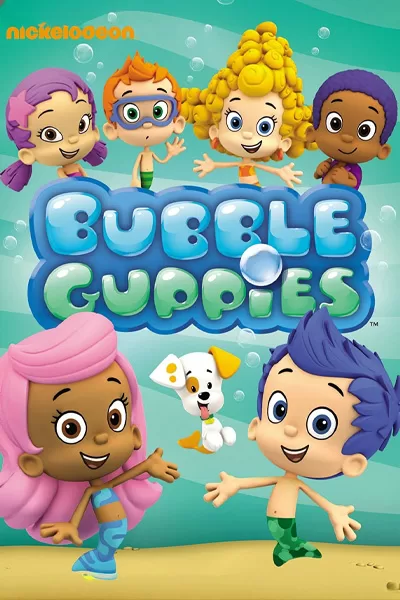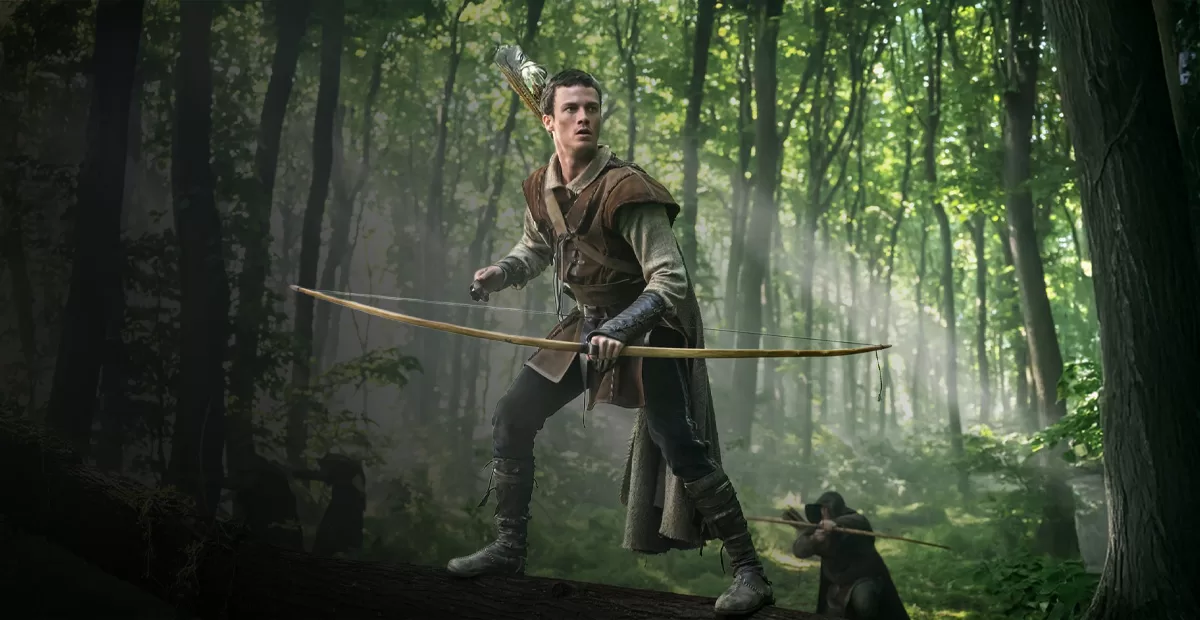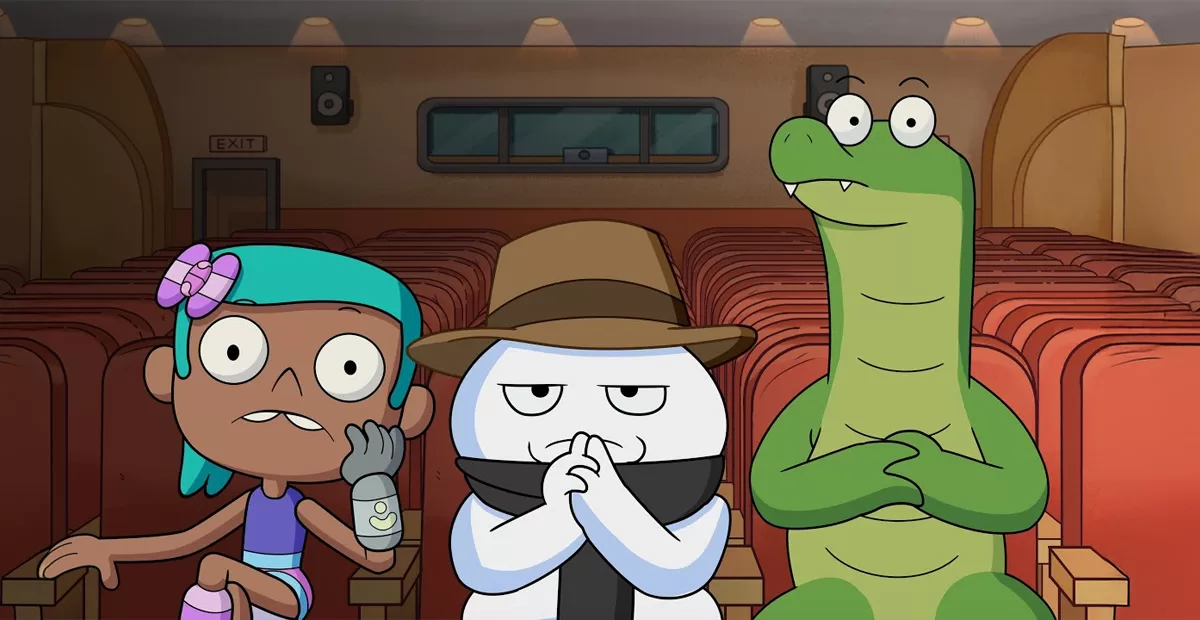
- Starring
- Brianna Gentilella (that had to be tough in Jr. High), Chris Phillips, Tino Insana
- Creators
- Jonny Belt, Robert Scull
- Rating
- TV-Y
- Genre
- Adventure, Children, Music
- Release date
- Sept 15, 2006
- Where to watch
- Paramount+
Overall Score
Rating Overview
Rating Summary
Bubble Guppies follows a group of preschool-aged mer-kids—Molly, Gil, Goby, Deema, Oona, Nonny, and their pet Bubble Puppy—as they navigate imaginative underwater adventures in their vibrant aquatic city. Each episode combines songs, vibrant animation, and lighthearted stories that teach social skills, problem-solving, and fundamental concepts such as shapes, colors, and numbers.
Bubble Guppies Review (S4: E2 – Costume Boxing)
When compared to them, Bubble Guppies is a hollow, saccharine sweet Twinkie of artificial narrative chemicals and high-fructose corn syrup poured into a mold and packed in bright colors meant to trick your children into developing social diabetes. It offers nothing of value.
I recall impressing adults with the knowledge I gained from my childhood programs. However, this episode features no fewer than two musical numbers discussing how to zip up zippers and culminates in a contest about buttoning up shirts. Mr. Roger’s Neighborhood and the first few decades of Sesame Street handled these topics with a nuanced sophistication completely devoid in this modern tripe.
Furthermore, the intentions behind the lessons now are a complete 180° from those classics. When Burt and Ernie taught children how to dress themselves, the idea was to teach self-reliance, responsibility, and to be helpful and respectful to their parents. Bubble Guppies wants to teach children about expressing their individuality and showing the world their “true selves.”
Ultimately, Bubble Guppies is hypnotic lidocaine meant to lower IQs 20 minutes at a time.
PARENTAL NOTES
Drool Cups
- Yeah, the content conforms to a TV-Y rating, but your kids might end up being zombies.
WOKE REPORT
RuPaul
- With RuPaul voicing a character in this episode, you might be surprised that our Woke-O-Meter score isn’t more severe. However, his character is both inconsequential and barely in the episode, and does not appear to be anything other than a female. In fact, if I hadn’t known, I never would have guessed it. So, while the casting choice is woke virtue signalling meant to bolster the showrunners’ street cred at celebrity cocktail parties, it has no more effect on the episode than Nancy Cartwright’s voicing Bart Simpson.
- It is, however, sketchy. If they are willing to push this boundary, what else are they willing to sneak into the show?
- There is some questionable language in this episode. Its central theme is about expressing individuality and true self through clothing, as the children occasionally wear silly costumes. While this may seem harmless, it’s difficult not to hear echoes of modern progressive rhetoric—voices insisting that dressing in the clothing of the opposite sex, or even undergoing body-altering procedures, is necessary to make the outer self match the inner self.
- Have they earned the benefit of the doubt? I don’t think so.
Low T
- There’s an argument to be made that Bubble Guppies should be marked as completely woke. It features one of the most insidious types of wokeness in modern television: the slow and subtle feminization of men.
- The main cast consists of three boy characters and three girls, and while there’s very little overt brainwashing in this episode, it is there. This episode of Bubble Guppies was about playing dress up— a phrase that has traditionally meant little girls dressing up in princess costumes and playing with mom’s leftover makeup. It’s true that little boys dress up like superheroes, etc., but there’s a nuanced difference in how each sex experiences it.
- As a male, my self, I can say that neither I, my brother, nor any of our sons have ever used the phrase “dress up” in this way. Furthermore, I’ve only ever seen little boys and little girls of the same age playing together when they are engaged in some kind of physical or athletic activity (e.g., tag, basketball), or when the girl wants to tomboy it up.
- The exceptions that I’ve personally witnessed are boys who grew up to be gay, or if the boy was doing it as a gag—inherently knowing it to be ridiculous.
- Of course, in this episode, the boys are just as thrilled to play dress up as the girls. To be fair, the boys only dress in traditionally male costumes (e.g., police uniforms, firefighter gear, etc.); however, two out of the three girls also dress in the same masculine outfits—attempting to indoctrinate our children that the only differences between male and female are the clothes that we wear.
- The boys cheer on their female friends as they don various “girly” outfits, telling them that they “look amazing,” etc. They’re one lisp away from a “FABULOUS!”
- One little boy takes a doll that may or may not be an action figure to a boutique in order to find clothes for it. He wants to dress it up as a pirate (which is traditionally a male role), but the fact that he goes to a boutique and wants to dress up a doll is…gay. The clothing on most boy action figures is a part of the plastic mold and inseparable from the doll. There are some exceptions, but most of those are things like snap-on armor or other enhancements to make the character more intimidating.
- As a male, my self, I can say that neither I, my brother, nor any of our sons have ever used the phrase “dress up” in this way. Furthermore, I’ve only ever seen little boys and little girls of the same age playing together when they are engaged in some kind of physical or athletic activity (e.g., tag, basketball), or when the girl wants to tomboy it up.
- The main cast consists of three boy characters and three girls, and while there’s very little overt brainwashing in this episode, it is there. This episode of Bubble Guppies was about playing dress up— a phrase that has traditionally meant little girls dressing up in princess costumes and playing with mom’s leftover makeup. It’s true that little boys dress up like superheroes, etc., but there’s a nuanced difference in how each sex experiences it.
James Carrick
James Carrick is a passionate film enthusiast with a degree in theater and philosophy. James approaches dramatic criticism from a philosophic foundation grounded in aesthetics and ethics, offering insight and analysis that reveals layers of cinematic narrative with a touch of irreverence and a dash of snark.




